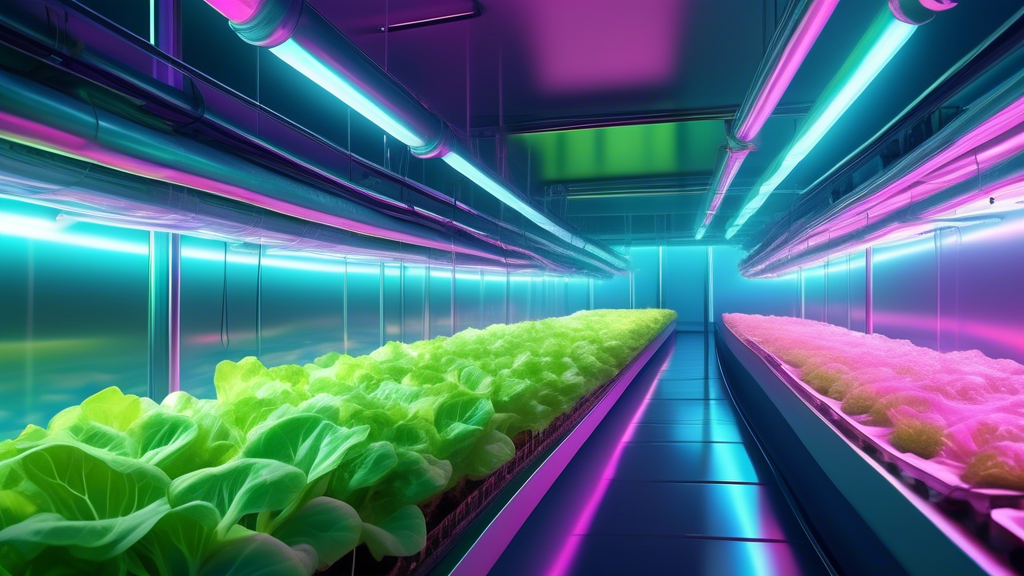
Why Your Plants Are Thirsty for More Than Just Water
The Core Problem with Soil-less Growing
In a traditional garden, plant roots explore the soil, extracting a complex buffet of minerals and organic compounds. Hydroponics removes this safety net. Your plants are entirely dependent on the solution you provide. They can’t scavenge for nutrients, making any imbalance or deficiency in your mix an immediate and direct threat to their health. This also introduces the risk of nutrient lockout, where minerals become chemically unavailable to the plant roots, often due to an incorrect pH level, effectively starving your plants even in a nutrient-rich bath.
Signs Your Hydroponic Garden is Hungry
Your plants communicate their distress clearly if you know what to look for. Yellowing leaves, particularly older ones, often signal a nitrogen deficiency. Stunted growth and weak stems can point to a lack of phosphorus. Poor fruit development or brown spots on leaf edges might indicate insufficient potassium. Recognizing these signs early is key to correcting your nutrient solution before your yield suffers.
Deconstructing the Perfect Nutrient Solution
The Big Three: N-P-K Explained
The N-P-K ratio on a nutrient bottle is the foundation of plant health.
- Nitrogen (N): The engine of vegetative growth. It’s a core component of chlorophyll, and a deficiency results in pale green or yellow leaves.
- Phosphorus (P): Essential for energy transfer. It promotes strong root development and is crucial for flower, fruit, and seed production.
- Potassium (K): The regulator. It controls the opening and closing of stomata (pores on leaves), aids in enzyme activation, and improves overall plant vigor and disease resistance.
The Essential Supporting Cast: Micronutrients
While needed in smaller quantities, micronutrients are just as vital. Calcium is fundamental for cell wall structure; magnesium is the central atom in the chlorophyll molecule; iron is critical for chlorophyll synthesis and energy transfer. Without them, plants cannot complete basic physiological functions.
The Unique Factor: Chelated Nutrients – The Secret to Better Uptake
What most people don’t know is that many essential nutrients, like iron, are prone to reacting with other elements in the water and becoming insoluble—effectively useless to your plants. Chelation is a process where these nutrients are wrapped in an organic “shell” or ligand. This protective barrier keeps the nutrient soluble and readily available for the plant roots to absorb, even when the pH of your solution isn’t in the perfect range. Think of it as a protective delivery service that ensures the nutrients arrive at the root zone intact and ready for uptake.
Liquid vs. Powdered Nutrients: Which is Right for Your Setup?
The Case for Liquid Nutrients
Liquid nutrients are the “plug-and-play” option for hydroponics.
| Pros | Cons |
|---|---|
| Easy to use and measure | More expensive per dose |
| Instantly soluble and readily available | Heavier and more costly to ship |
| Convenient for small to medium systems | Shorter shelf life once opened |
The Case for Powdered/Soluble Nutrients
Powdered nutrients are the choice for the cost-conscious and large-scale grower.
| Pros | Cons |
|---|---|
| Extremely cost-effective in the long run | Can be messy and dusty |
| Very long shelf life | Requires thorough mixing to dissolve completely |
| Lightweight and cheap to ship | May not be as immediately available to plants |
Mastering the Art of Mixing and Maintenance
The Golden Rule: Order of Operations
Mixing nutrients in the wrong order can cause them to react and form insoluble precipitates, falling out of solution. Always follow this sequence:
- Fill your reservoir with water.
- Add silica supplements first (they require high pH to stay soluble).
- Add calcium-based nutrients.
- Add your main nutrient solution (Part A, then Part B if using a two-part).
- Finally, add all other supplements (e.g., rooting enhancers, bloom boosters).
Monitoring Your Mix: EC, PPM, and pH
Consistent monitoring is non-negotiable for hydroponic success.
- EC/PPM: Electrical Conductivity (EC) or Parts Per Million (PPM) measures the total concentration of dissolved salts (nutrients) in your solution. It tells you the solution’s strength. Too low, and your plants starve; too high, and you can cause “nutrient burn.”
- pH Level: The pH level determines nutrient availability. In hydroponics, the ideal range is 5.5 to 6.5. Outside this range, certain nutrients become locked out and unavailable, no matter how much you’ve added.
Creating a Feeding Schedule
Plants have different nutritional demands throughout their life cycle. A generic feeding schedule might look like this, but always refer to your specific nutrient brand’s guidelines.
| Growth Stage | Nutrient Focus | Typical EC/PPM Range |
|---|---|---|
| Seedling / Clone | Very mild solution, high in phosphorus for root development | 0.8-1.2 EC (400-600 PPM) |
| Vegetative | High Nitrogen for leaf and stem growth | 1.2-1.8 EC (600-900 PPM) |
| Flowering / Fruiting | Lower Nitrogen, higher Phosphorus and Potassium | 1.8-2.4 EC (900-1200 PPM) |
Frequently Asked Questions About Nutrient Solutions for Hydroponics
How often should I change my nutrient solution?
You should completely change your nutrient solution every 1 to 2 weeks. The exact frequency depends on the size of your plants and the volume of your system. As plants consume water and nutrients, the solution becomes imbalanced, and waste products can build up, making a fresh start necessary for optimal health.
Can I use regular plant fertilizer in my hydroponic system?
No, you should never use soil fertilizers in a hydroponic system. They are not designed for direct root contact in water and often contain insoluble compounds that will clog pumps and drippers. More importantly, they lack the specific, readily available forms of nutrients, especially micronutrients, that hydroponic plants require.
What’s the difference between one-part and multi-part nutrient solutions?
A one-part solution is a single bottle (or powder) containing all nutrients, making it simple and foolproof. Multi-part solutions (e.g., 2-part or 3-part) separate nutrients that are chemically incompatible when highly concentrated. This prevents them from reacting and “falling out” of solution in the bottle, gives them a longer shelf life, and allows for more precise custom mixing for different growth stages.
Why is the pH of my nutrient solution always drifting?
pH drift is a natural process in hydroponics. As plants absorb different nutrient ions at varying rates, they release other ions (like hydrogen or hydroxide) into the solution, which alters the pH. A solution that consistently drifts high might indicate your plants are consuming more acidic nutrients (like nitrogen), and vice versa. This is why daily monitoring and adjustment are essential parts of system maintenance.






